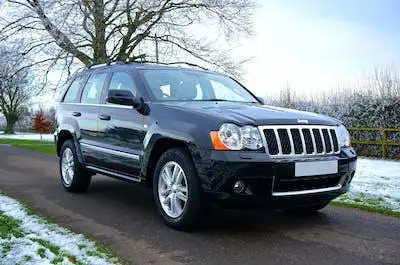First things first: Size matters. When you ask about SUVs, you're not asking about a singular breed. The term encompasses a vast menagerie, from compact crossovers nimble enough to navigate city streets to hulking behemoths ready to conquer any off-road challenge. Naturally, their price tags reflect this diversity.
Compact and Mid-size SUVs: Seeking practicality without breaking the bank? Look towards the compact and mid-size camps. Their average starting prices hover around $30,000 and $36,000 respectively, offering ample space and features for families or adventurers on a budget. Think Honda CR-V, Toyota RAV4, or Ford Escape for compacts, and Chevrolet Equinox, Hyundai Santa Fe, or Subaru Forester for mid-size options.
Full-size and Luxury SUVs: Craving more space and power? Buckle up for full-size and luxury SUVs, where the average price significantly bumps up to $50,000 and beyond. These are the kings and queens of the road, boasting cavernous interiors, potent engines, and cutting-edge tech. Picture behemoths like the Chevrolet Tahoe, Ford Expedition, or Toyota Sequoia in the full-size arena, and indulge in the opulence of Land Rover Range Rover, Mercedes-Benz GLS, or Cadillac Escalade in the luxury realm.
Beyond Size: The Feature Labyrinth: Size is just the tip of the iceberg. Within each category lies a labyrinth of features that significantly impact price. Sunroofs, leather seats, advanced driver-assistance systems, high-performance engines – each perk adds another tile to the ever-growing price mosaic. Remember, a base model can be deceivingly affordable; fully loaded versions can easily double the starting price.
Market Dynamics: A Moving Target: Even with size and features factored in, the average SUV price remains a moving target. The automotive market is a dynamic beast, susceptible to fluctuations in raw material costs, supply chain disruptions, and economic changes. Global events, like the chip shortage, can send prices soaring, while increased competition might trigger strategic discounts. Therefore, the average price you find today might not hold true tomorrow.
Regional Variations: Location, Location, Location: Geography plays a subtle but crucial role in shaping the SUV price landscape. Taxes, dealer markups, and regional demand can influence the final sticker price. An SUV costing an average of $35,000 in California might carry a slightly higher price tag in Maine. Research local dealerships and online price aggregators to get a realistic picture for your specific location.
New vs. Used: A Matter of Age: Don't forget the age factor! New SUVs might boast the latest bells and whistles, but their price reflects their pristine state. Used SUVs offer significant savings, with depreciation significantly dropping the price tag. However, remember that mileage, condition, and maintenance history significantly impact the value of a used SUV. Be a vigilant sleuth during your search to uncover hidden gems.
The Takeaway: Knowledge is Power in the SUV Maze: Navigating the average SUV price in America requires shedding the one-size-fits-all mindset. Size, features, market dynamics, location, and even age all play their part. By understanding these factors and diligently researching your options, you can transform from a lost wanderer in the automotive maze into a confident consumer who finds the perfect SUV for your needs and budget. So, buckle up, equip yourself with knowledge, and embark on your SUV price discovery adventure!
Remember, this is just a starting point. Feel free to delve deeper into specific categories, brands, or features that pique your interest. The more you explore, the more equipped you'll be to conquer the quest for your dream SUV at the right price.

